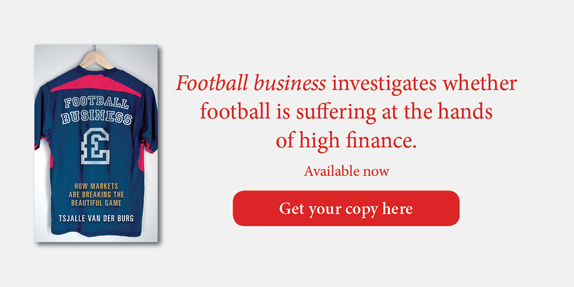Author Archives: Catherine Holdsworth
The Infinite Ideas interview with Richard Mayson
29 October 2014 by Catherine Holdsworth in Wine and spirits
 Port expert Richard Mayson has taken a few minutes out of his busy schedule to sit down with us and chat about his favourite drink. Here are his thoughts on port-related subjects from the tricks of tasting to the effects of global warming on the wine trade.
Port expert Richard Mayson has taken a few minutes out of his busy schedule to sit down with us and chat about his favourite drink. Here are his thoughts on port-related subjects from the tricks of tasting to the effects of global warming on the wine trade.
Why isn’t port wine produced anywhere else?
It is all a matter of terroir. Nowhere in the world apart from the Douro valley has the same combination of climate, geology/soil types and heritage. With centuries of accumulated history behind it Port is very much the product of a culture that has developed among 34,000 growers and the shippers (many of them well-known) who bring the wines to the market.
 What have been the biggest changes in the production of port in recent years?
What have been the biggest changes in the production of port in recent years?
The main change that has taken place in recent years is the improvement in wine making technology. Until as recently as the 1970s a large amount of port was produced in time-honoured fashion that would be familiar to someone plucked out of the eighteenth century! Better knowledge of grape varieties, matching them to vineyard sites, picking at optimum ripeness and better control of extraction and fermentation have all made port into a much better product. Added to which, with their purchase of vineyards many of the larger shippers are now able to control the whole production process from the grape to the bottle. It is no wonder that the quality of port is better now than it has ever been.
In Port and the Douro you’ve written a lot about the history of the drink, but what do you think lies ahead in the world of port; does it face challenges or do you predict a boom?
Port has always faced challenges and always will. The Douro region is a costly place to grow grapes and wine is subject to the vagaries of fashion. I don’t predict a boom but I do predict a healthy future for those producers making less but better and focusing on quality-conscious markets. There is a real and developing interest worldwide in wines that embody the character of their grower and region. In the Douro small growers and large shippers have been facing up to this and there is much more individuality in their wines.
Do you think global warming has affected the production of port?
I am a global warming sceptic but, as a grape grower myself, it is hard to ignore the fact that something seems to have been going on with the climate over the past decade or more. The Douro is fortunate in having a spread of micro- and meso-climates and there is no reason why the region should not adapt. The grape varieties used to make port are amazingly drought resistant. There have been hot years (like 2003) but also cooler ones (like 2014). Vintage variation is what wine is all about and climate change adds a new and rather fascinating (if slightly scary) element to this.
Do you think that technology has generally been a good or bad thing for port?
Oh undoubtedly a good thing! But it has to be used wisely. When new technology has been rushed in, it has had negative consequences (as in the 1970s when I think there was a dip in the quality of vintage port). The port shippers have in general learnt from this and new inventions (like the robotic treading of grapes) have been introduced gradually.
Port is often regarded as an old-fashioned tipple; how would you convince today’s drinkers that it’s worth trying?
Port is a drink with a long history but it is just as relevant today as it always was. I defy any wine drinker not to be seduced by a glass of ten or twenty year old tawny served cool from the fridge on a warm summer’s day. It is about matching the wine to the mood and port with its multiplicity of styles is more than just a wine for drinking after dinner at Christmas!
Port-tasting is quite a specialised skill. How did you get into it – were you a natural or did you have to learn?
We all have to learn and I am still learning all the time. Every time I taste a new vintage I am learning something new. Taste is about memory and experience. I am fortunate in that I have plenty of both!
Can you tell us about the worst port you have ever tasted?
It would have to be something masquerading as port coming from another country. There are still some very poor, cheap imitations out there though fortunately they don’t tend to make it as far as the UK.
Who is the greatest character you have met during your long career in the port trade? Can you tell us about him/her?
I think it is the late and lamented Bruce Guimaraens who was the wine maker for Taylor and Fonseca until 1995. He made every wine from 1960 onwards including the great 1963, 1966 and 1970 vintages. Bruce was a huge man, in all respects, who knew every inch of the Douro and was treated with great regard and affection by growers and shippers alike. He spoke everyone’s language, in both Portuguese and English. He liked nothing better than a good glass of port and, eschewing the purple prose sometimes favoured by wine writers, he would drain the decanter and say ‘it’s just bloody good vintage port’. He is profiled on page 172 of my book [Port and the Douro].
Other than port what is your favourite drink – not necessarily alcoholic – and why?
I don’t drink much other than wine, water and tomato juice! I hate sweet, fizzy drinks and I don’t drink spirits. But I do like a bloody mary!
Richard Mayson is the author of Port and the Douro and Richard Mayson’s guide to vintage port

Victoria Beckham named Britain’s most successful entrepreneur
27 October 2014 by Catherine Holdsworth in Business and finance, Current events, Entertainment
Twenty years ago, an unknown girl band released their first single, Wannabe, and posed on the stairs of the St Pancras Hotel to promote ‘Girl Power’. Much has changed in two decades but one thing is certain, Victoria Beckham has made the incredible transformation from Posh Spice to head of the Posh London crowd and, in turn, Britain’s most successful entrepreneur, so listen up Apprentice contestants!
Last month, Beckham, also known as VB, opened her first flagship store in London. She has generated substantial profits for her company, and was recently named as the Greatest Style Icon at this year’s London Fashion Week.

It is the ultimate reinvention. When one thinks of how many members of pop groups have tried to make it in Hollywood, floundered on Celebrity Big Brother, or tried their hand at ‘writing’ novels, VB seems to be the most successful of all of them. No longer do we look at her and think of the Spice Girls; here is a woman who has taken the fashion world (and in turn the business world) by storm.
She is now a UN Goodwill ambassador and addressed the organization last month, which meant that she missed the opening of her London store. She is everywhere, it would seem, with her fingers in a lot of pies. But then again, it’s all for a good cause. Never did we think that the woman in the little Gucci dress would become one of the world’s most powerful women.
It has been well knownfor years that Brand Beckham has been successful, as she and David brough out his and hers perfumes while also pursuing profitable modelling careers. They are the idealistic couple but no longer do they have to sell their stories to OK! magazine. They have reached new levels of success and in turn, respectability.
Whatever you think of VB (and at Infinite Ideas we love her) you have to admit that the woman is talented. Yes, it takes a lot of money to be successful, it takes a well known brand to make it in the world of fashion, but she’s also done it with lots of hard work and dedication to her line.
VB is Catherine’s personal hero, and now we can see why. Perhaps in another ten years she will be Prime Minister.
If you want to manage your own company like VB, the best place to start is probably with a book on management models. Perhaps you will be on next year’s list … otherwise we would advise marrying someone rich and building your own empire!
What mouldy food can teach us about dating
22 October 2014 by Catherine Holdsworth in Lifestyle
Dr Michael Mosley has been at it again and is shaking up what we thought we knew with more diet tips. This week, Dr Mosley tackles mould and the debate about when it is acceptable to keep on eating and when we should just chuck it away.
Common sense will tell us that sell-by dates (particularly on tins) are really just a precautionary measure and most things do not suddenly wither on the day of expiration. However, we can take other, valuable life lessons from ‘gone-off’ food, in particular, advice on dating. How do you know when to end a relationship? How can you tell if it’s going to go the distance?

Lisa Helmanis offers great advice on when to throw in the towel in her book, Master dating:
How to spot a ‘definitely not’
Of course, we all have our off days, and sometimes we don’t give the best impression. If you think that some of his dodgy behaviour could just be some dodgy, early-days glitches, then give yourself a time limit and hang in there for a little while. On the other hand, if he seems to fit any of these descriptions, if they seem to be a large part of his personality or a major pastime, walk on by.
- A man who has more beauty products than you do. There is nothing wrong with taking a pride in his appearance, but it shouldn’t take up 50% of his salary.
- Someone who uses the calculator on his mobile phone to work out your share of the bill in a restaurant. Or an actual calculator.
- A man that assumes it’s OK to invite his friends along when you ask him to a friend’s party, dinner, meet your parents…
- A man who always complains that he is exhausted every night after work or whenever you ask him to do anything that involves your friends. This is selfishness of the worst kind: disguising his laziness as you being demanding.
- Any man that says he loves you within the first week – it rarely counts for much if he doesn’t know your second name.
- Someone who turns being boyish into an art form. It’s cute until he can’t be relied upon to pay his share of the rent or leaves the baby on the bus.
- A ‘rarely available’. No one is that busy. A man who is not often available is usually not very interested or has got someone else.
- Anyone in a relationship. If you genuinely believe that he is the one, then ask him to come back when he is free. If he is right, he will extract himself and come find you.
- Your best friend’s ex, father or current boyfriend.
- Anyone who leaves weeks between being in touch – to be frank, he is obviously looking for an, ahem, ‘release’ and you are it.
- Anyone you think would be perfect if you could just change that one little thing about them…
Are you free?
Sometimes people think they are looking for a relationship, when really they are looking for a way to fill their time, entertain themselves or get some sex and comfort. And there isn’t necessarily anything wrong with those desires. Unless, of course, you are on the receiving end of them, hoping for more. You can, naturally, ask the other person straight out what they want, but they might not be honest with you or even be aware of their real motivations.
So you have to use a little common sense here and make a judgement call. A guy who wants to see you no more than two nights a week may be taking it slow or may just have no big plans for your future. Try upping the ante by asking clearly, in an adult way with no whining, for what you would like (three nights a week, perhaps). Don’t explain or cajole; if he wants to keep you or please you he will think it through and reply, also in an adult way; if he wants things only on his terms he may try to make you feel like a demanding bunny-boiler (unless you are a demanding bunny-boiler, in which case get help). If so, it could be time to move on.
Maybe it’s time to clear out your fridge…and your little black book!
Feminism suffers a setback in Japan
20 October 2014 by Catherine Holdsworth in Business and finance, The Diversity Dashboard
We’re all familiar with the British MPs’ expenses scandal, which shocked tax payers, revealing that duck houses were more important uses of our money than improvements to the NHS. Two of Japan’s ministers have stepped down today after it was revealed that they had taken advantage of the claims system. However, this is not merely a blow for the government, but for feminism and women’s rights in Japan.
One minister to resign was hotly tipped to be the country’s first female leader, which would have bolstered the feminist movement in Asia and promoted gender equality in a country slightly late to that party.

Elidh Milnes and Dr Deborah Swallow’s book, The diversity dashboard, offers advice to women wishing to do business in Japan and how to avoid the pitfalls of working in an unfamiliar culture.
Culture crash
Starting a new job is always daunting; moving to a new country even more so. Else, a middle-aged Danish lady, has made the move to Tokushima, Japan, in order to experience a new culture and progress her career. Before she moved to Japan, she was the general manager in a popular soft-drink company. Else led by example and encouraged her staff to work in an inclusive work environment where each member of the team was treated equally and each role was viewed as just as important as the next. She was more like a mentor than a manager and this put a spring in her step each morning.
On the first day at work in the company in Tokushima, Else was greeted by three well-dressed men: not a woman in sight except for the girl at reception. Instantly she sensed the male-dominated environment and over the next few weeks she began to feel insignificant. Although no one said anything directly to Else, she found her points of view were shunned, her self-esteem bruised, and she felt put down. Her management style was achieving nothing and she was getting nowhere.
Culture tip
In Japan, hierarchy is an all important feature of management. An English male colleague who had been working in the firm for two years explained, ‘The work culture in Japan makes a clear differentiation between male and female roles. It is a rigid structure and although multinational companies are more used to women in the workforce, the traditional Japanese companies still only have men as senior managers.’
Cultural insight
A recent survey suggests that: ‘Gender inequality causes resentment, anger and reduced life satisfaction more among European and American women than among Chinese women, who value gender equality less. Chinese women consider gender inequality to be less unjust and less unfair.’
One hopes that this does not harm the feminist movement in Japan and that social progression continues apace. We may have to send over Germaine Greer!
The rising price of football
15 October 2014 by Catherine Holdsworth in Business and finance, Football Business
If you’ve grown up in the UK then you’ll know the passion that we have for our home teams. Football has become the unofficial national sport of this country and fans flock in their thousands to each game, cheering on their teams come rain or shine.
This afternoon, Dan Walker and Sarah Brett will discuss the rising price of football on BBC 5 Live. It will be interesting to see what they make of the rise in costs and whether they believe they are spread fairly. Despite the recent recession the costs associated with supporting a football team continue to rise. Many people across Britain are now having to pay high sums to attend games. This, however, is not the end of the cost. Think about away games, travelling to different stadiums, buying the new season’s strip, and a pie at half time. All these expenses add up; football starts to look like that cute puppy you adopted but who turned out to be a Great Dane, eating you out of house and home.
Economist Tsjalle van der Burg points out that even if fans decide to stay at home and avoid the ridiculous cost of a season ticket, they still have to pay high prices to watch the matches on TV. So where does all this money go?
In Van der Burg’s book, Football business: how markets are breaking the beautiful game, he highlights the effect that money has had on the sport.
What would have happened if Manchester United, the English champions of 2013, had played Burnley, the champions of 1960? The answer is clear: the Mancunians would have beaten the Clarets 158–1. That is, if the score had been expressed in terms of money. The Clarets made £136,000 in 1960 (or, to be precise, in the season ending that year). In that year £1 bought you seventeen times as much as it would in 2013. So £136,000 in 1960 was worth as much as £2.3 million in 2013. However, Manchester United earned £363 million that year, in other words 158 times as much.
The other English clubs were earning less than United in 2013. However, the average Premier League club received, after correcting for inflation, about fifty-three times as much as the average club in the English top division of 1960. Not a bad score. Elsewhere in Europe, professional football has also seen remarkable growth.
It all seems to be a great success. But is it? The revenues of car manufacturers have also exploded since 1960. Consumers spend much more on cars than they used to and they get a lot in return: a wide choice of cars is produced and the cars are of superior quality. One could assume that the same thing is going on in football, when in fact, the quality of the basic product – football matches – have not improved over the years.
There is more and more money in football, and this has changed the character of the game. Everything has become more business oriented. Supporters have to pay more to watch matches. The distance between clubs and their supporters has grown. Some clubs are owned by entrepreneurs in search of profits. And these trends seem set to continue into the future. Some see the money in the game today as a curse. They yearn for the past when ‘everything was better’.




